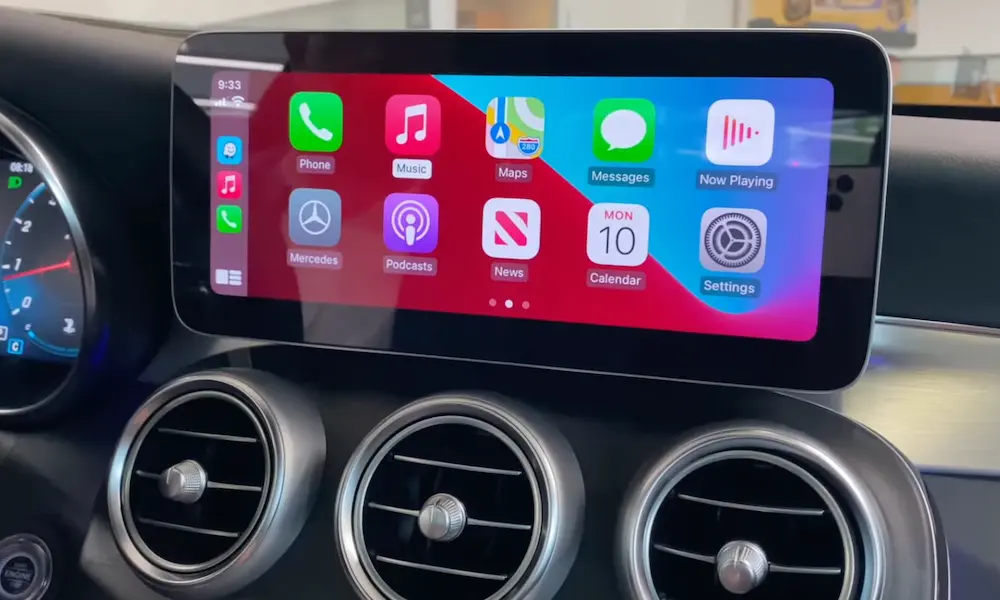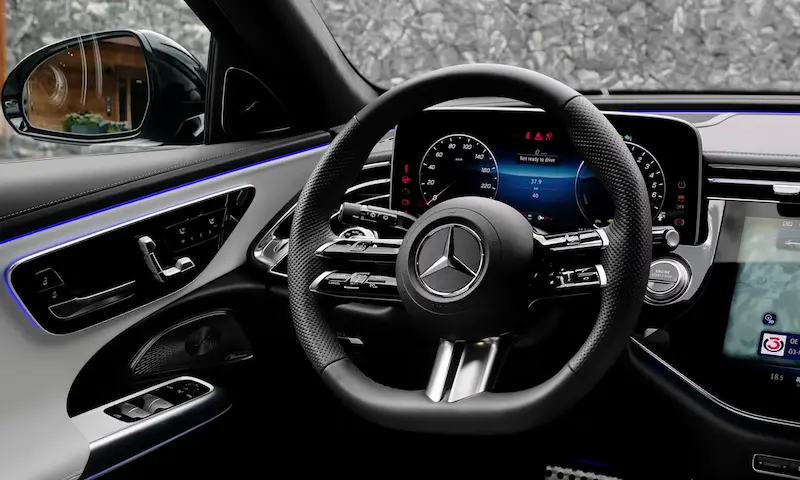When encountering a P0299 code in your Mercedes, it signifies an issue related to turbocharger or supercharger “A” having an underboost condition. This could result in the engine not accelerating as it should and possibly triggering a limp mode, depending on your vehicle.
Various issues can lead to this problem, such as vacuum leaks, EGR issues, a damaged turbo, or a problem with the boost pressure sensor. By addressing these potential causes, you can restore your engine’s power and performance.
Symptoms of Mercedes P0299 Code
When your Mercedes experiences a P0299 code, you may notice several symptoms. These signs can help you identify the issue and take necessary action to address the problem.
One of the most common symptoms of a P0299 code is your vehicle going into limp mode. This mode is the vehicle’s way of protecting the engine and other components from potential damage caused by the underboost condition. When it happens, you’ll likely experience a significant loss of power and reduced performance.
Another typical symptom of a P0299 code is the check engine light illuminating on your dashboard. This light comes on when your vehicle’s engine control module (ECM) detects an issue, such as low boost pressure produced by the turbocharger or supercharger.
The P0299 code specifically points to an underboost condition, which means your engine isn’t receiving enough boost pressure for proper performance. You might feel a noticeable decline in acceleration, especially when driving at highway speeds or when trying to quickly gain speed.
In some instances, you may also experience a low boost condition. This is when your vehicle’s turbocharger or supercharger system is not providing enough boost for optimum engine performance. This situation can lead to slower acceleration, reduced fuel efficiency, and a suboptimal driving experience overall.
Remember that while these symptoms can be indicative of a P0299 code, it’s essential to diagnose the issue by connecting an OBD2 scanner to read the exact code causing your check engine light to come on. By addressing the symptoms and understanding the P0299 code in your Mercedes, you can take the appropriate steps to fix the problem and improve your vehicle’s performance.
Causes for Mercedes P0299 Code
Turbocharger Issues
One common cause of the P0299 code is issues with the turbocharger itself. It can result from low air pressure coming to the turbine of the turbocharger. This underboost condition could be due to vacuum leaks, EGR problems, a damaged turbo, or issues with the boost pressure sensor. The wastegate, which controls the flow of exhaust gases to the turbocharger, may also malfunction or become stuck. If it fails to open or close properly, this can lead to underboost and trigger the P0299 code.
Sensor Faults
Another possible cause of the P0299 code is faults with the sensors responsible for detecting and measuring boost pressure. The boost pressure sensor, or MAP (Manifold Absolute Pressure) sensor, might be malfunctioning or have a poor connection. If the sensor is unable to accurately read the boost pressure within the intake manifold, it can result in the underboost code. In some cases, the wiring or connectors associated with these sensors may be damaged or corroded, which can also lead to false readings and trigger the P0299 code.
Air Intake and Exhaust Blockages
Air intake and exhaust blockages can also lead to a P0299 code. If there is an air intake leak or blockage, the amount of air reaching the turbocharger or supercharger may be reduced. This can cause the underboost condition and trigger the P0299 code. In addition, exhaust blockages can also restrict the flow of exhaust gases out of the engine, which can impact the turbocharger’s performance and result in an underboost condition. To prevent this issue, ensure that the air intake and exhaust systems are regularly inspected and kept clean and clear of any obstructions.
Solutions to Fix Mercedes P0299 Code
To resolve the P0299 code in your Mercedes-Benz, follow these steps:
First, inspect the intake system for any leaks, which can lead to an underboost condition. Check the hoses, connections, and the intake manifold for any signs of cracks or damage. Repair or replace any damaged components to ensure proper airflow.
Next, examine the wastegate and wastegate actuator. The wastegate is responsible for regulating the pressure in the turbo by opening and closing as needed. Make sure the wastegate is functioning correctly, and the actuator is not seized or damaged. Replace the wastegate or actuator if necessary.
Also, take a look at the EGR (Exhaust Gas Recirculation) system. The EGR system helps to reduce emissions by recirculating exhaust gases back into the intake manifold. A malfunctioning EGR system can contribute to the P0299 code. Clean or replace the EGR valve as needed for optimum performance.
Inspect the DTC (Diagnostic Trouble Code) to determine if there are any other codes stored. These codes may provide additional information on the cause of the P0299 code, allowing for more accurate diagnosis and repair.
Another crucial component to check is the blowoff valve. This valve helps relieve excess pressure in the turbo system. If the blowoff valve is stuck or malfunctioning, it can cause underboost conditions. Repair or replace the blowoff valve if required.
When assessing your Mercedes-Benz, don’t forget to inspect the vehicles wastegate bypass regulator valve. This valve also plays a crucial role in maintaining the correct boost levels. If faulty, it can contribute to the appearance of the P0299 code. Replace the wastegate bypass regulator valve as needed.
Lastly, if none of the above-mentioned repairs resolve the issue, consider a turbo replacement. However, this should be a last resort, as replacing the turbo can be expensive and labor-intensive. Consult a professional mechanic for advice before proceeding with a turbo replacement.
By following these steps and addressing any necessary repairs or replacements, you can effectively solve the P0299 code in your Mercedes-Benz and restore your vehicle’s performance.
Final Thoughts
In dealing with the Mercedes P0299 code, remember that it may indicate various issues with your vehicle’s turbocharger or supercharger. You can start by checking for split pipes, cracked intake pipes, or other components related to the turbo system.
Fixing the issue may involve relatively simple and affordable solutions, as seen in a Mercedes-Benz forum where a mere pipe replacement resolved the problem. However, more complex repairs might be sometimes necessary. It’s crucial to diagnose the issue accurately and address it promptly. If unsure, consult a professional mechanic for assistance. This way, you can maintain your Mercedes in optimal condition and ensure a smooth, powerful driving experience.












